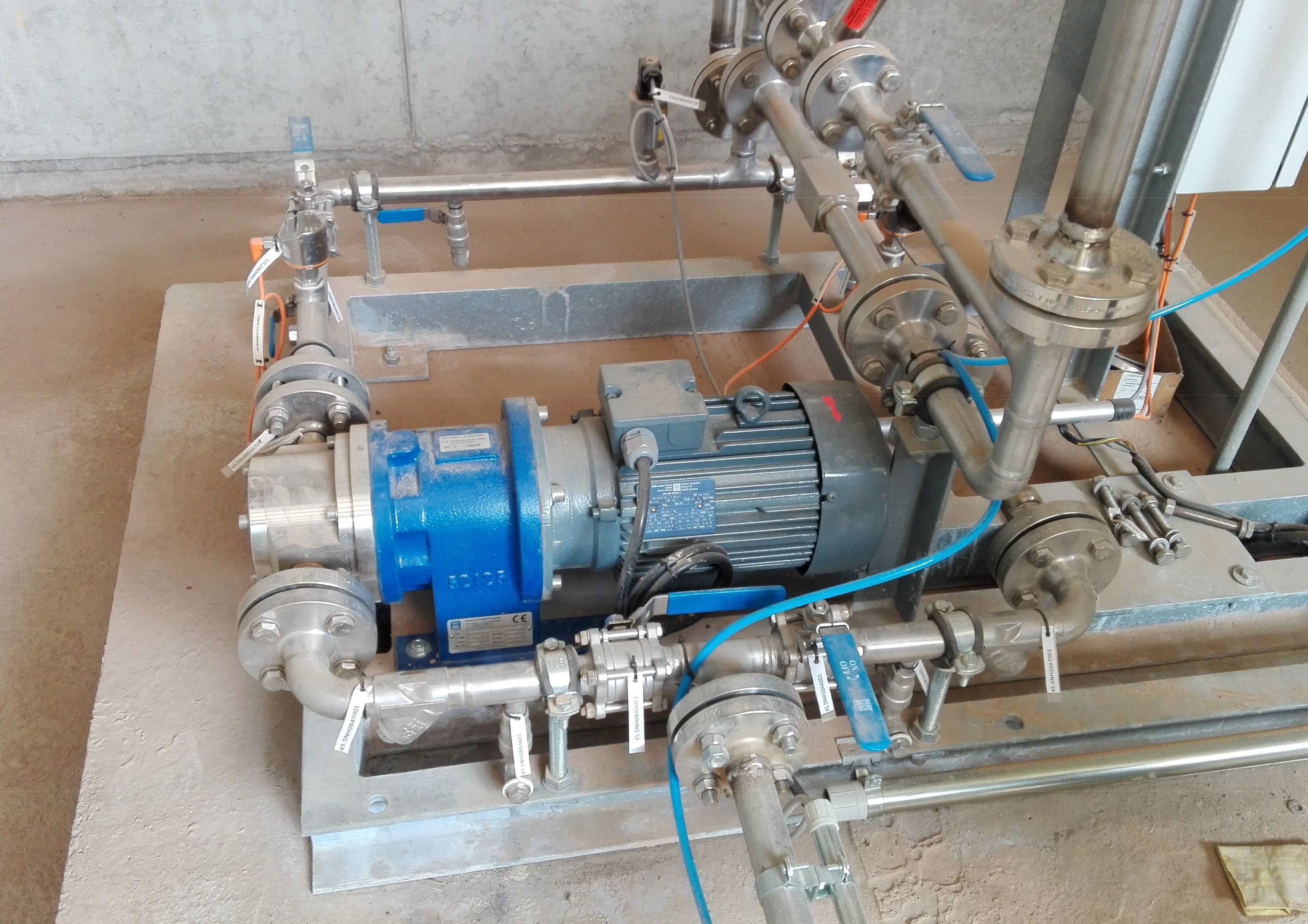Dosing pump for the SNCR process
Selective non-catalytic reduction of nitrogen oxides (SNCR process)
VANE-MAG® MPA - corrosion-resistant and magnetically-coupled rotary sliding vane pumps made of stainless steel for conveying ammonia water, technically leak-proof according to TA-Luft
The SNCR process is an established method for reducing nitrogen oxides (NOx) in emissions from industrial plants such as power plants, cement factories, or waste incinerators. It is a cost-effective way to reduce nitrogen oxide emissions and, in turn, air pollution and acid rain.
The SNCR process is based on the reduction of nitrogen oxides with ammonia (NH3) or urea (NH2CONH2) as reducing agents. The reduction takes place at high temperatures, typically between 850-1100 °C. The reducing agent is injected directly into the exhaust stream before the gases enter the flue gas cleaning system.
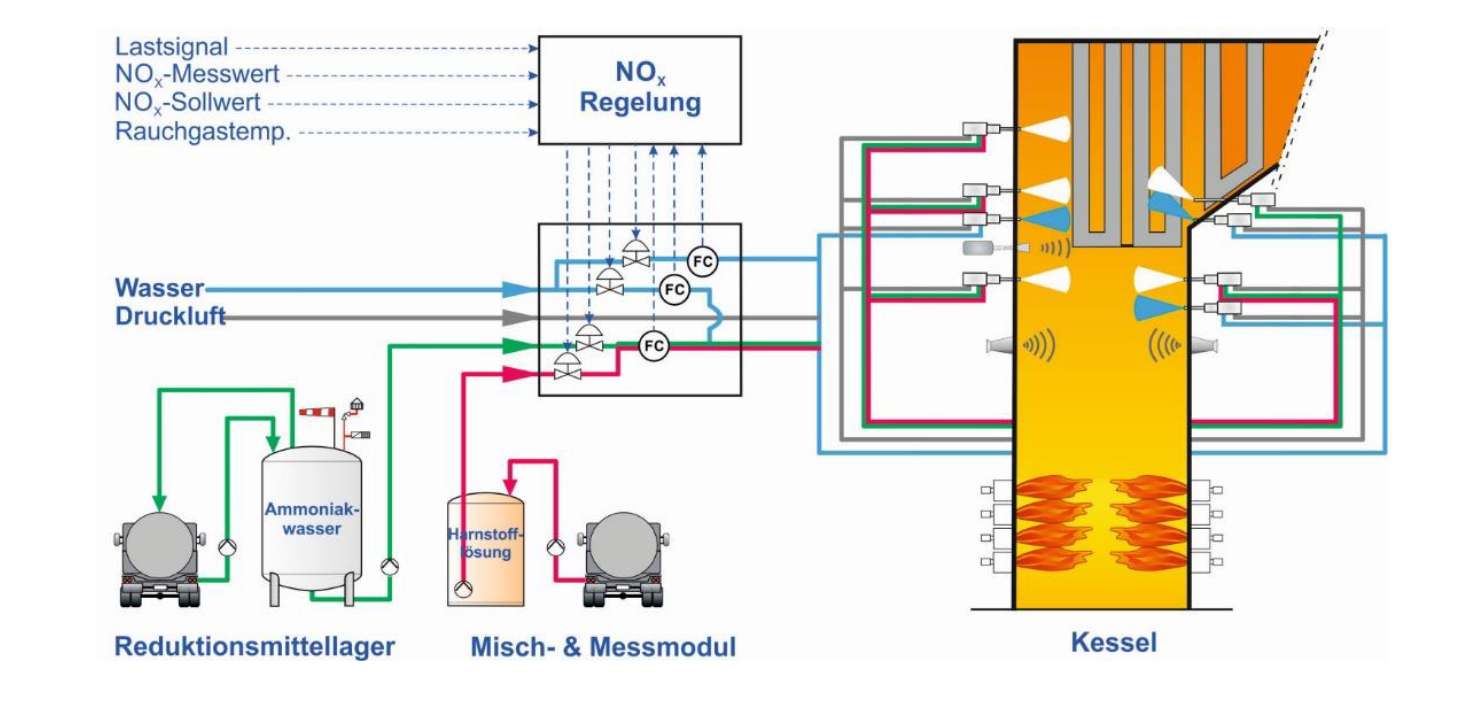
In the flue gas cleaning system, the reducing agent reacts with the nitrogen oxides, converting them into nitrogen and water. The reduction occurs as the reducing agent reacts with the nitrogen oxides and transforms them into molecular nitrogen and water. The precise mechanism of the reaction depends on the type of reducing agent, the temperature, and other factors.
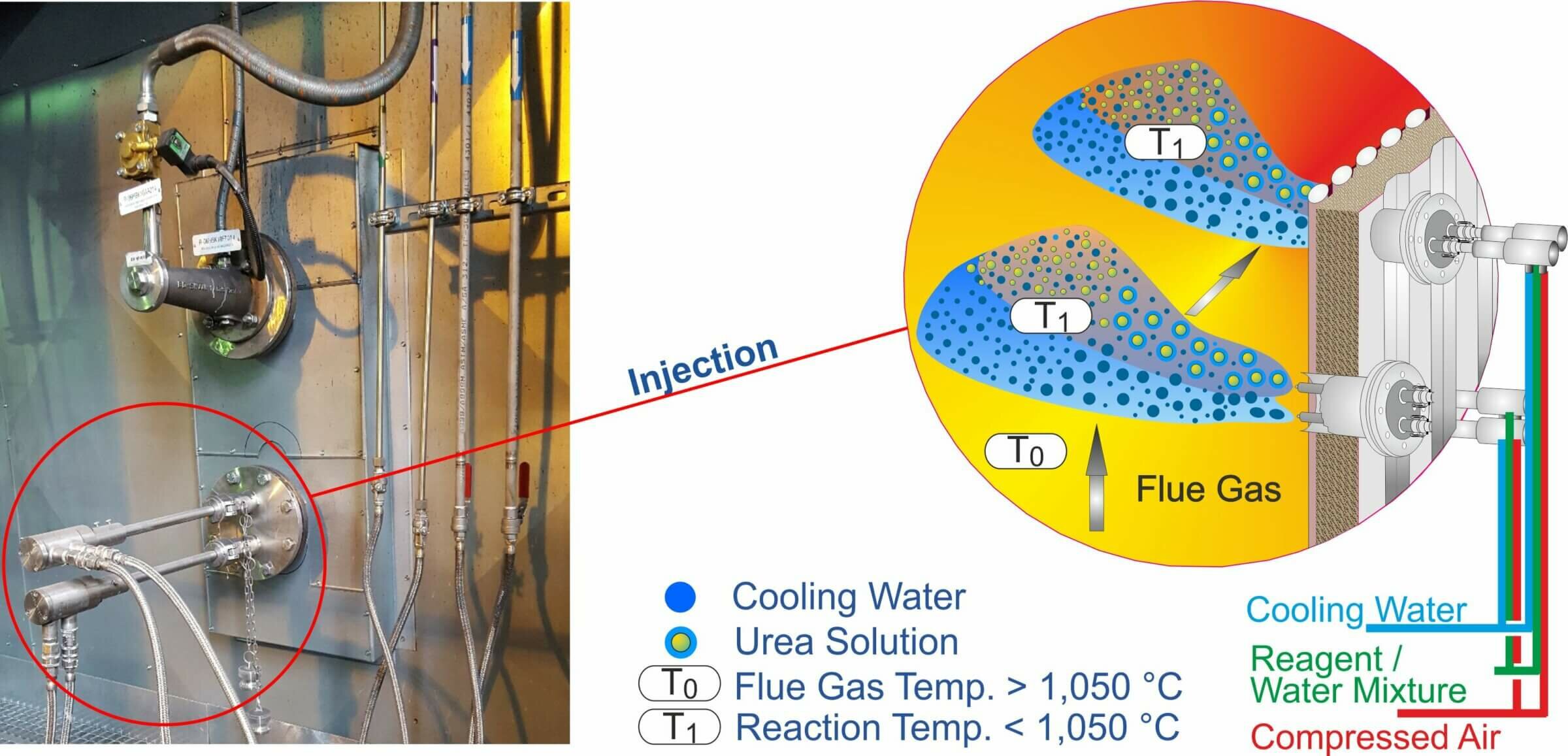
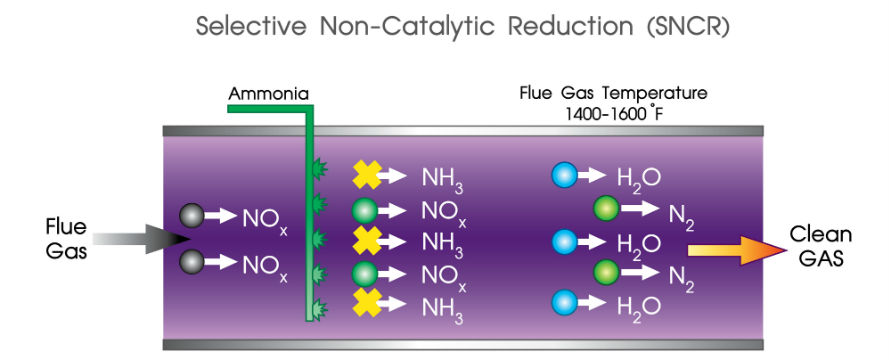
The SNCR process is selective as it only reacts with nitrogen oxides, while other compounds in the exhaust such as sulfur oxides (SOx) and carbon monoxide (CO) are not affected. The process is also non-catalytic, as it does not require the use of catalysts.
The SNCR process has some advantages over other exhaust gas cleaning technologies, such as selective catalytic reduction (SCR). It is more cost-effective than SCR technology as it does not require catalysts. It can also be installed in existing plants without significant modifications to the facility.
However, the SNCR process also has some drawbacks. It has a lower nitrogen oxide reduction rate than SCR technology and is less effective at reducing nitrogen oxides at lower temperatures. It is also sensitive to changes in operating conditions, such as fluctuations in exhaust composition, exhaust temperature, and air ratio.
Overall, the SNCR process is a proven and cost-effective method for reducing nitrogen oxides in emissions from industrial plants. It is often used in combination with other exhaust gas cleaning technologies to reduce pollutant emissions in the air and improve air quality.
For more than 20 years, we have been supplying the market leader in the field of SNCR systems, Mehldau & Steinfath Umwelttechnik GmbH. In this long-standing business relationship, we have successfully equipped over 200 SNCR systems with our slide vane pumps. Mr. Daniel von der Heide is available as a knowledgeable point of contact at Mehldau & Steinfath Umwelttechnik GmbH.
Pump design
The SNCR process typically uses metering pumps to allow precise dosing of the reducing agent. A differential pressure of up to 10 bar is required for injecting the reducing agent into the combustion system. The required flow rate varies depending on the size of the combustion system, with flow rates typically ranging from 100 to 1000 l/h in industrial plants. When using ammonia water, it is recommended to aim for a low motor speed to reduce NPSHR and avoid cavitation. The choice between using frequency converters or overflow valves to dose the required amount of reducing agent into the combustion chamber is up to the plant manufacturer.
The MARCH VANE-MAG® MPA pump series has the advantage of having highly effective hydraulic properties. These rotating displacement pumps, also known as rotary vane pumps, are typically used to transport or precisely dose fluids with low lubrication properties. The pump rotor is equipped with slots in which the vanes move radially and press against the inner wall of the stator bore or the lifting ring. In this way, a narrowing space between the vane and stator is created during the rotation of the rotor, which draws in the medium. As the vane is further moved, the medium is trapped between the vane and the housing and transported to the pump outlet by the rotation of the rotor. The vanes, stator, and axial bearing are made of carbon graphite and have very good self-lubricating properties.
Rotary vane pumps are often used in applications where pulsation-free and continuous pumping of small quantities at high backpressure is required, such as in the chemical, food, and pharmaceutical industries. They are maintenance-free and have a long service life as they consist of few parts that do not easily wear out under ideal operating conditions.
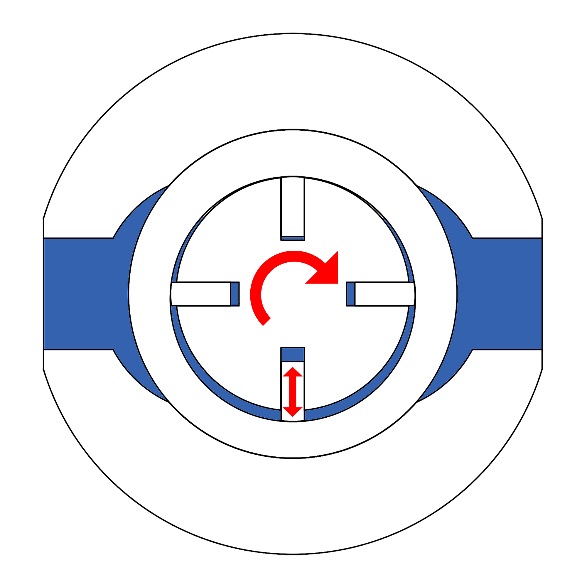
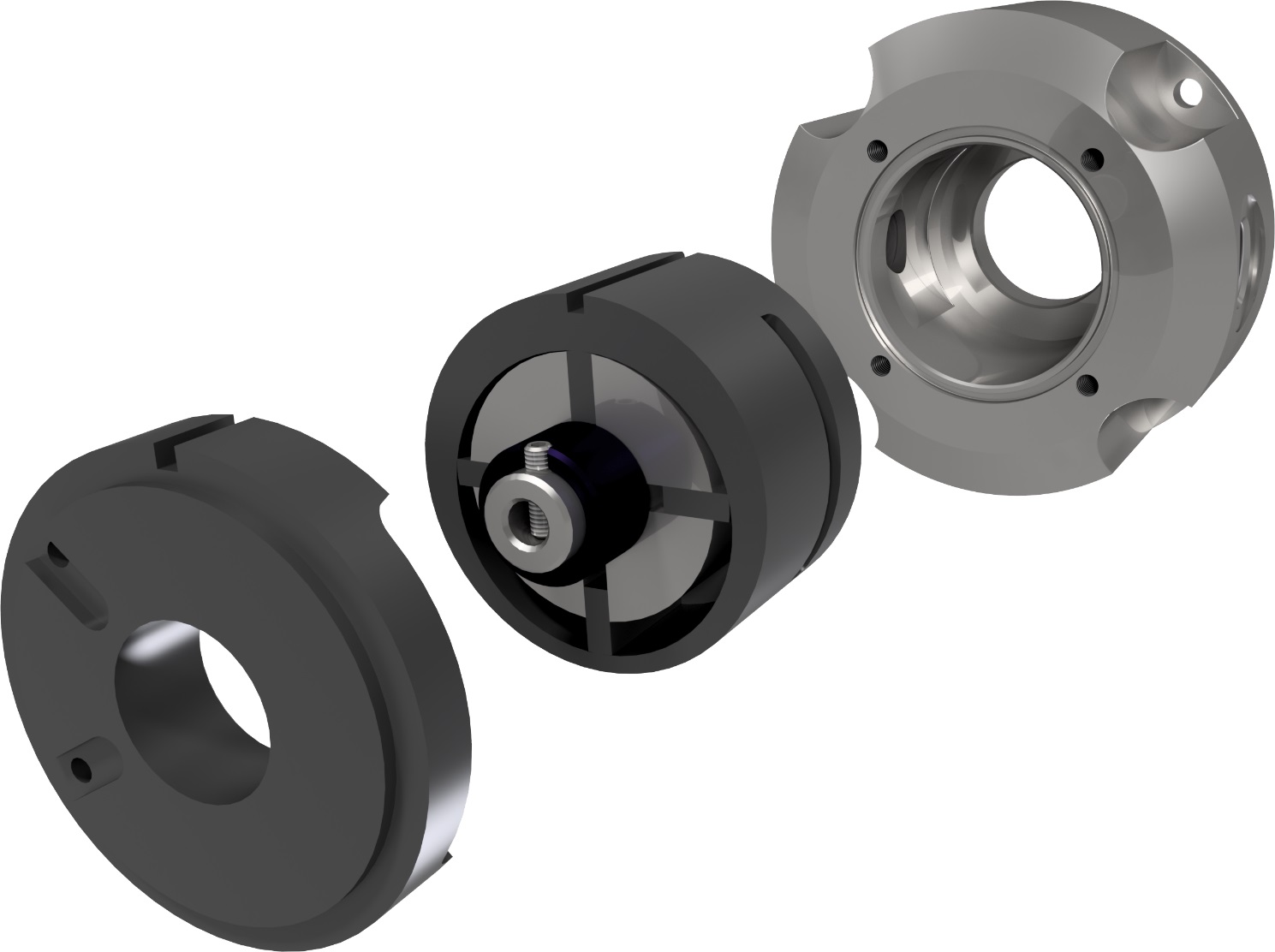
Pictures
